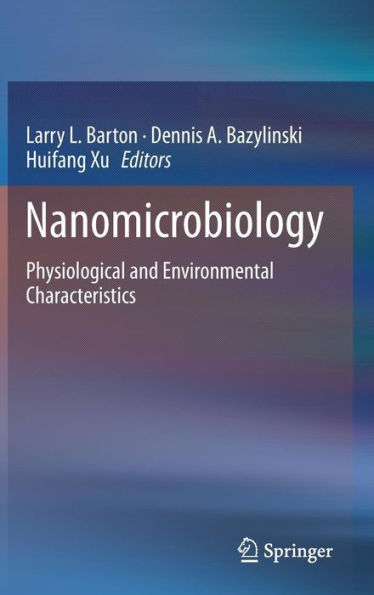Nanomicrobiology: Physiological and Environmental Characteristics
This book is devoted to nanomicrobiology and the nanosystems of bacteria. The initial chapter discusses some of the controversies in the geochemical and biomedical fields associated with the reports of nanobacteria in the environment. Current knowledge of several internal and surface structures of bacteria is addressed in this book. Included are chapters discussing carboxysomes, S-layers, gliding motility of bacteria, and aggregation of iron to produce nano-magnetite. Information about the activities of outer membrane vesicles produced by Gram-negative bacteria is discussed as a benefit to bacteria that produce it and some potential industrial applications are presented. A broad review of bacterial-mineral interactions is addressed in a chapter of metallic nanoparticles and colloids production by bacterial reduction of soluble redox active elements. The structures of bacterial nanowires are discussed and their application in extra-cellular electron transport is reviewed. Nanomotor activities of bacteria are discussed as pertains to the mechanics of flagellar rotation, production of energy by ATP synthase, DNA packing, and translocation of proteins across membranes by secretion systems. The rapidly evolving field of nanosystem technology is embracing many areas, and it is the hope that this book will stimulate the use of bacterial nanostructures for future developments in nanotechnology.
1136503157
Nanomicrobiology: Physiological and Environmental Characteristics
This book is devoted to nanomicrobiology and the nanosystems of bacteria. The initial chapter discusses some of the controversies in the geochemical and biomedical fields associated with the reports of nanobacteria in the environment. Current knowledge of several internal and surface structures of bacteria is addressed in this book. Included are chapters discussing carboxysomes, S-layers, gliding motility of bacteria, and aggregation of iron to produce nano-magnetite. Information about the activities of outer membrane vesicles produced by Gram-negative bacteria is discussed as a benefit to bacteria that produce it and some potential industrial applications are presented. A broad review of bacterial-mineral interactions is addressed in a chapter of metallic nanoparticles and colloids production by bacterial reduction of soluble redox active elements. The structures of bacterial nanowires are discussed and their application in extra-cellular electron transport is reviewed. Nanomotor activities of bacteria are discussed as pertains to the mechanics of flagellar rotation, production of energy by ATP synthase, DNA packing, and translocation of proteins across membranes by secretion systems. The rapidly evolving field of nanosystem technology is embracing many areas, and it is the hope that this book will stimulate the use of bacterial nanostructures for future developments in nanotechnology.
109.99
In Stock
5
1

Nanomicrobiology: Physiological and Environmental Characteristics
184
Nanomicrobiology: Physiological and Environmental Characteristics
184
109.99
In Stock

Product Details
| ISBN-13: | 9781493916665 |
|---|---|
| Publisher: | Springer New York |
| Publication date: | 11/06/2014 |
| Edition description: | 2014 |
| Pages: | 184 |
| Product dimensions: | 6.10(w) x 9.25(h) x 0.02(d) |
From the B&N Reads Blog
